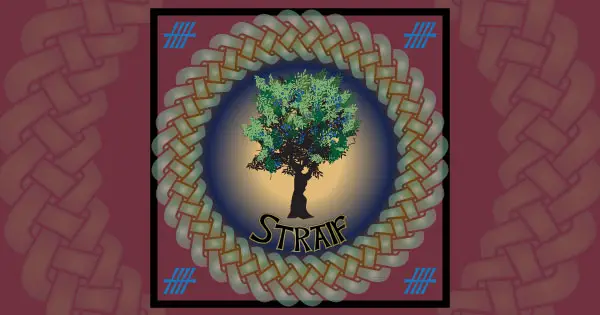Blackthorn has, perhaps, the most sinister reputation in Celtic tree lore. Known as Straif ancient Ireland, it’s thought to be the origin of the word ‘strife’.
The blackthorn is associated with the dark side of the year. It is a prickly shrub with long thorns that can cause septic flesh wounds. It produces bitter sweet berries (sloes) that ripen after the first frost.
The blackthorn is often associated with overcoming obstacles for a better future or protection and hope in the midst of devastation.
Celtic Mythology Trees
Celtic Mythology
It is a haven for birds such as the, now rare, nightingale who find protection amongst the tree’s long thorns.
Sloe berries can be very carefully picked during October, after a frost, and used to make sloe gin, a mixture of sloes, sugar and gin left to mature for nearly three months to be enjoyed as a yule tide treat.
The berries, leaves and bark of the tree are said to stimulate metabolism, clean the blood, heal stomach upsets and disperse toxins from the body. So, why does the blackthorn have such a dark reputation?
Blackthorn guarded by unfriendly fairies
Ss Straif, is the 14th letter in the ogham alphabet. Its closest modern equivalent would be the letter z.
In Irish folklore, the blackthorn is guarded by the spiky fairy-folk known as the Lunantisidhe, literally meaning moon fairy.
They are not friendly towards humans on the best of days but should you try to cut wood from the blackthorn on the festivals of Samhain or Beltane they will surely curse you.
The Lunantisidhe only leave the tree at Esbats (on a full moon) in order to pay homage to the moon goddess. So this may be the safest time to pick sloes or cut the wood.
The wood of the blackthorn is traditionally used in Ireland to make shillelaghs, a walking stick-shaped club, originally used as a weapon to settle a score and now a symbol of heritage among many people of Irish descent throughout the world. The logo of the Boston Celtics, for example, portrays a leprechaun leaning on a shillelagh.
Cailleach – the goddess of winter
Blackthorn is also often associated with the Cailleach, the goddess and ruler of winter. In Celtic folklore, the Cailleach emerges at Samhain to take over the year from the summer goddess Brighid.
One portrayal of the Cailleach, of which there are many, is of a blue veiled old woman with a raven perched on one shoulder and a blackthorn staff in hand which she uses to create mountains, lakes and valleys and also bring about snow storms and rough weather.
In Scottish-Gaelic the word Cailleach literally means ‘veiled one’ or ‘old woman’.
Perhaps it is due to this association that the blackthorn is sometimes known as the dark crone of the woods. Of course, it could also be due to its dark and twisted form.
Witches were said to use blackthorn wands
The old relationship with the crone led the Christians to link the blackthorn with witches and dark magic. It was said that witches used thorny blackthorn wands to curse people and had magic walking sticks of blackthorn wood with which to cause trouble.
In 1670, Major Thomas Weir of Edinburgh was garrotted and burned for witchcraft along with his blackthorn walking stick. Witches and heretics were said to be burned on blackthorn pyres to cleanse their evil.
Another Christian belief was that the Devil chose his victims or disciples by pricking them with a blackthorn thorn, the blood from the wound sealing a deal with the Devil.
The Blackthorn does not seem to have any ancient European mythology connected to it aside from that of Ireland and Britain which is unusual as the tree is also native to Continental Europe and Western Asia.
